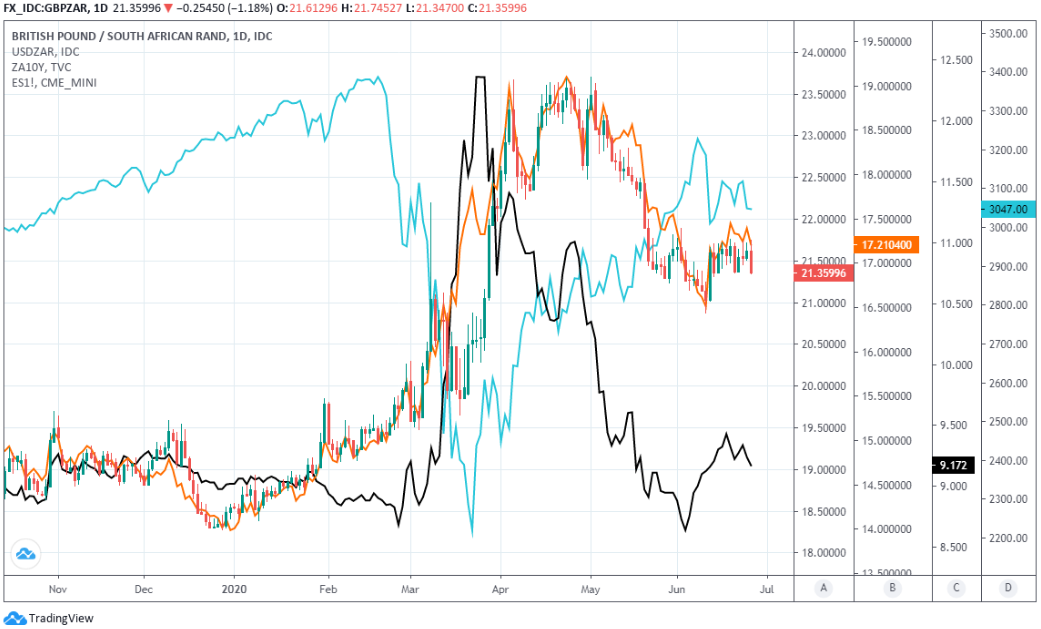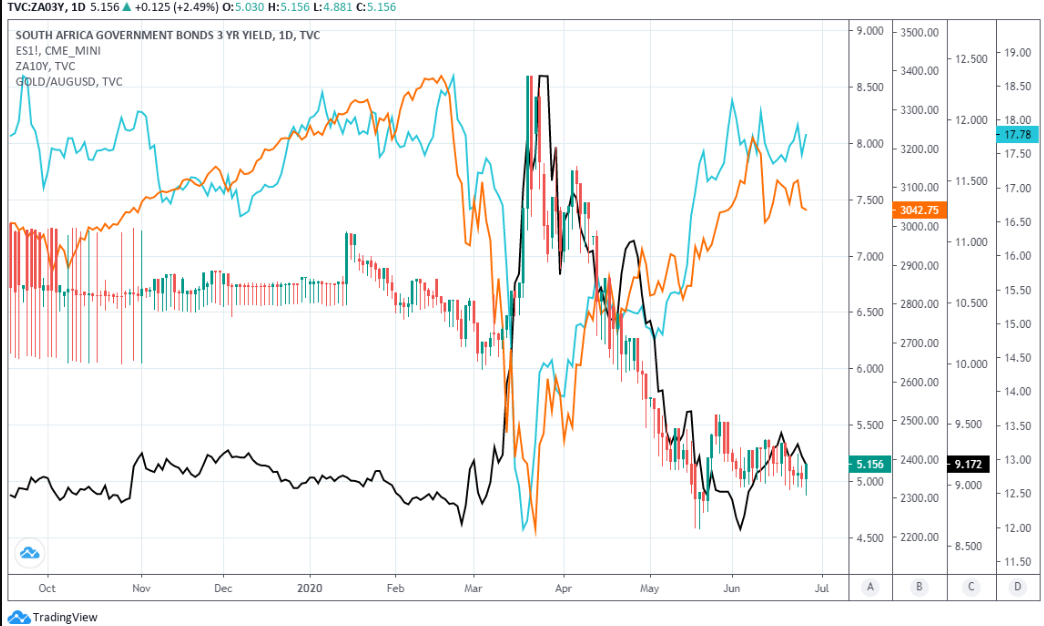South African Rand Shines as Risk Assets Stabilise and Market Mulls Budget but Upside Seen as Limited
- Written by: James Skinner
- ZAR outperforms as risk appetites stabilise, market mulls budget.
- ZAR follows SA bonds on budget hopes but upside seen limited.
- U.S. second virus wave poses risk to sentiment, ZAR recovery.
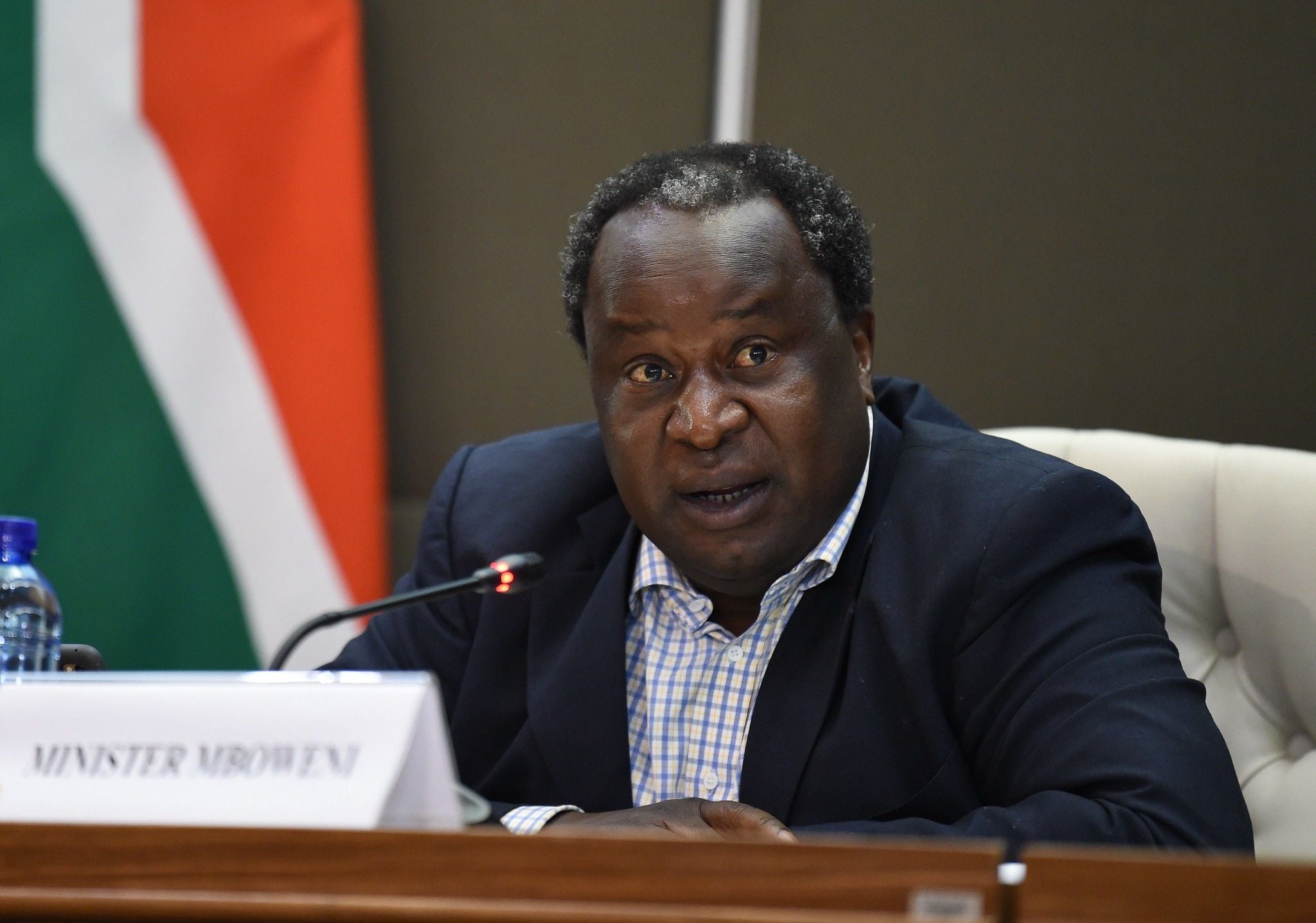
Above: File image of Tito Mboweni. Image © GovernmentZA
Achieve up to 3-5% more currency for your money transfers. Beat your bank's rate by using a specialist FX provider: find out how.
The Rand outperformed Thursday on stabilising risk appetite and as the South African currency caught up with the local bond market following Finance Minister Tito Mboweni's emergency budget, but a second wave of U.S. coronavirus infections is threatening the rally and analysts say the upside is limited.
South Africa's Rand was rising in a show of strength that it had lacked in the prior session when Finance Minister Mboweni's supplementary budget was warmly received by the local bond market.
USD/ZAR and the Pound-to-Rand rate fell heavily but the South African currency was also higher against all other developed world currencies as well as its emerging market rivals.
Global price action was indicative of stabilising risk appetite in some parts as weakness in the Euro and safe-havens like the Yen and Franc explained a rise in the Dollar Index while the intraday ecline in the S&P 500 was not matched by other countries' indices, many of which crept higher.
"This is more of a holding action rather than a solid rebound from yesterday’s heavy losses. The key question for investors now is whether the rise in cases is a series of localised outbreaks or the beginning of a real second wave," says Chris Beuachamp, chief market analyst at IG Group.
Above: GBP/ZAR and USD/ZAR (orange line) falling, with S&P 500 (blue line) & SA 10 Year bond yield (black) also declining.
The Rand rally may have been bolstered by steadying risk appetite Thursday but its breadth might be better explained by a catch-up with recent developments in the South African bond market.
Bonds drew a strong bid Wednesday after Finance Minister Mboweni commited to eliminate the deficit and stabilise the debt-to-GDP ratio by 2023/24 despite the anticipated loss of nearly one fifth of tax revenues this year.
"While the revenue shortfall was worse than consensus, the SAB at least renders the estimate as credible, and the expenditure overrun was lower than anticipated," says Nema Ramkhelawan-Bhana, an economist at Rand Merchant Bank. "At USD/ZAR17.46, you’d be doubtful of the sentiment expressed above. Bond yields, however, are far more expressive of the positivity, though there is still a healthy air of scepticism over whether the NT will follow through."
There were concerns that coronavirus would end efforts to right the public finances but the Finance Minister at least was not willing to be deterred from pursuing structural reforms that many in the market say are long overdue.
"We have to rebuild investor confidence and that means confidence in our fiscal strategy. Given that the massive deterioration in circumstances for South Africa and Minister Mboweni since the February Budget are the result of a major global event, rather than anything local, at least talking about tight fiscal discipline should start rebuilding some confidence. However, that is not enough," says Maarten Ackerman, chief economist and advisory partner at Citadel Wealth Management. "We urgently need to start implementing our strategy to get the results in order to reduce our risk premium and get investment capital flowing into the country. Policy implementation would help to support business confidence and incentivise firms to invest. The time is now!"
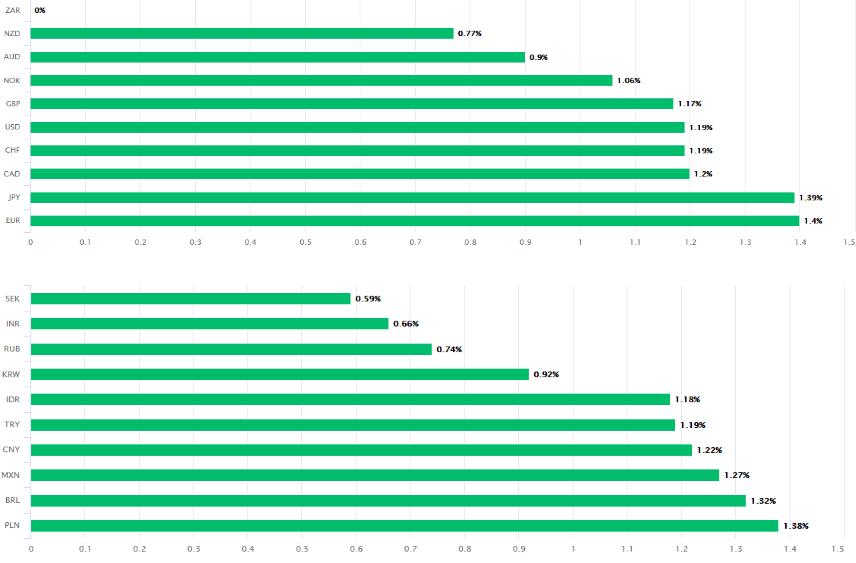
Above: Rand performance Vs selected developed and emerging world rivals on Wednesday. Source: Pound Sterling Live.
The rub for the Rand though is that in the absence of actual reforms and fiscal progress, its upside may be limited even without a turn for the worse in risk appetite given the long line of previous intiatives and targets that been announced but gone without implementation or achievement.
Non-Dollar currencies have followed stock markets generally for nearly three months but especially the S&P 500, which led the global recovery off March lows, and emerging market currencies have increasingly participated in that rally since early May. But global markets stalled early this month and since then emerging market currencies have corrected lower and in the process, established their own short-term ceilings.
This week has seen the S&P 500 begin to crumble as the coronavirus makes increasingly clear that it's not yet finished with the U.S. The growing second wave is threating the stifle the recovery in at least some parts of the world's largest economy and could conceivably sour the mood among investors and put a dent in demand for emerging market assets during the weeks ahead. This is a risk that could mean the Rand rally is on borrowed time already.
"We turned more cautious on EM in early June but in the more than 100 virtual meetings we have done over the course of the month with EM fixed income real money and hedge funds we have found the consensus to be more bullish than we are. We think markets removed too much risk premium from EM too fast," says David Hauner, a cross-asset strategist at BofA Global Research. "A common question was if there is room for further rally in EM. Our view is that a further rally can happen but only driven by better data in China/Europe/US or more news about further Fed/fiscal stimulus rather than better news on EM fundamentals, at least in the short term. Not much pushback on that."
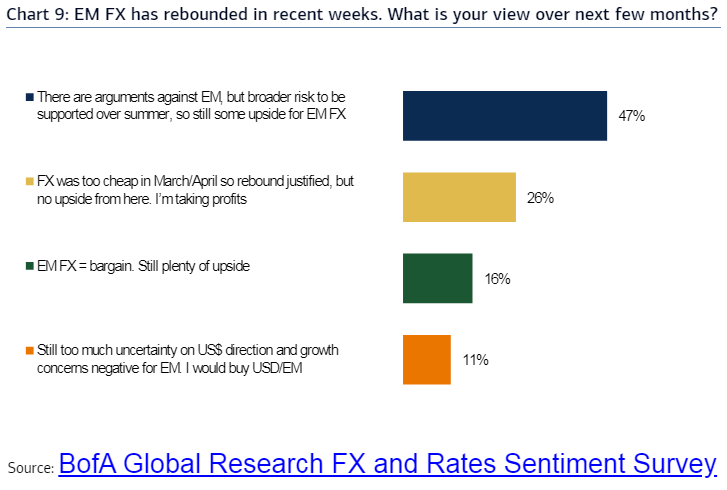
The U.S. saw its second largest one-day increase in new cases Wednesday while outbreaks in southern and western states like Arizona, South Carolina, Florida, Utah and others prompted authorities in some parts to impose 14-day quarantines on travellers from other parts of the country.
Arizona, Alabama and Florida reported further dramatic increases on Thursday while Texas Governor Greg Abbott was reported to have abandoned plans for a further relaxation of social distancing measures as intensive care facilities in the Houston City area neared full capacity.
BofA says markets are too optimistic about containment of the virus as well as the pace of the recovery and that this makes currencies like the Rand vulnerable. The bank advocated that clients buy USD/ZAR around 16.96 back on June 11 and has been targeting a move up to 17.32.
"Near-term the external environment is likely to remain the main driver of ZAR, overshadowing domestic developments. In the longer-run, the key question will be whether or not the government is able to translate its plan to stabilize debt (% GDP) by 2023/24 into concrete action - this is a story that will matter more as we approach the MTBPS in October and once the sense of the crisis eases," says Daria Parkhomenko, a strategist at RBC Capital Markets.
Above: SA 3-year and 10-year (black line) bonds yields alongside S&P 500 futures (orange line) and gold/silver ratio (blue).

